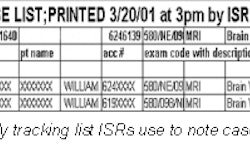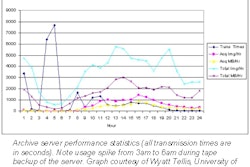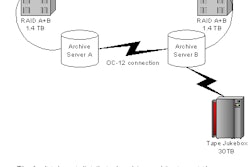
AuntMinnie.com is pleased to present the seventh in an ongoing series of practice management articles contributed by the Radiology Consulting Group in Boston. This twice-monthly series addresses topics and issues of concern to radiology administrators and business managers.
By Sharon Antiles, senior consultantRadiology Consulting Group

With the advent of digital modalities in the past decade, practitioners of conventional radiology have had to upgrade their skill sets to cope with new technologies and workflows. As in the general population, the computer skills of technologists vary greatly by modality.
For example, with diagnostic x-ray, computer skills were seldom required to perform and complete an exam, if at all. Historical methods for image acquisition and interpretation were often accepted with their inherent limitations, and full-scale workflow reengineering analyses were rarely performed.
In today’s healthcare environment, computer competency is required in daily operations. A breakdown of barriers from traditional thinking and practice needs to occur, and existing processes must be reviewed and revised to ensure successful implementation of new systems.
The digital environment of modern radiology covers systems as diverse as computed radiography (CR), digital radiography (DR), PACS, voice recognition, Web-based viewing systems, and Web-based applications. These systems often require users to acquire new skill sets that are outside the scope of daily responsibilities.
Although the benefits and reasons for transitioning to a digital environment may be communicated, fear and anxiety are often present with change. One of the most difficult aspects of any digital transformation is the training and management of individuals whose job responsibilities will change.
Why train?
Training is the act of making one proficient with specialized instruction and practice. The result is an employee who can avoid mistakes and ensure patient data integrity. Instructor-led teaching, in addition to providing a forum where a new skill set can be mastered, ensures that a uniform procedure or process is taught. Self-teaching, although seemingly less expensive, may lead to bad habits or incorrect processes.
In a RIS-based environment, for example, a technologist’s error -- such as incorrectly entering a patient medical record number or exam accession number -- will prevent a radiologist from being able to view the study because it will fail RIS validation. RIS validation is the process whereby the exams transmitted to the PACS are verified against previously stored patient demographics in the RIS.
Many times, if specific criteria are not met, the exam is not made available for interpretation until it is manually corrected with the appropriate information. Thus, particularly in radiology, errors at the front end of a process will have far-reaching downstream effects. Additionally, frustrations experienced by untrained or self-trained users with new systems will lead to inefficient use.
Prior planning propagates success
The successful implementation of new technologies and processes requires a period of transition from old systems. To ease this transition, a training program needs to be created that should include the following:
- Communication through staff meetings, postings, and e-mail that the transition will take place.
- A system overview that includes the operational impact on a division and the department.
- One-on-one or small group hands-on training sessions.
- The distribution of training guides.
- The posting of computer tags, support contact lists, and contingency plans at the new stations.
- Competency-based evaluation and certification.
- Follow-up training with group feedback one to two weeks after initial training
- Annual recertification.
Training in a 24 x 7 environment
There are three major challenges to digital training initiatives: training for off-hours and temporary staff, training for personnel located at remote locations, and training for residents. Training programs must encompass planning for night-time, weekend, part-time, and temporary staff. Training and support during off-hours should be as robust as the daytime shifts.
Multisite facilities also pose a challenge, especially when presenting new systems to large groups. Training should be consistent across sites. A phased-in training approach may be appropriate, depending on the resources available at the time of implementation. Resources for training should be taken into account during project planning. Finally, if a site has residents rotating through the department, training and competency-based evaluation must be continually available.
Data is an effective tool that helps assess the impact of training. A database should be maintained of all employees trained. Dates of certification and recertification should be recorded. Monthly statistics of compliance and departmental penetration allow the facility to evaluate trends and allocate appropriate resources.
For example, a department can view the voice-recognition penetration by division and by radiologist. Decreasing penetration over time may be noted. Data allows the trainer to proactively discern the problem. The trainer can meet with the radiologist to discuss reasons for a decline in usage or increasing error rate, and, if necessary, provide additional training, support, or insight.
Frequent fliers
Massachusetts General Hospital (MGH) in Boston has employed these tenets when implementing digital systems. PACS, voice recognition, CR, DR, Web-based viewing systems, and Web-tool technology have been successfully implemented at the institution. However, MGH administrators have realized that training is a continuous process.
MGH has begun a data integrity program (DIP) as the second phase in its digital training initiative. The DIP was created to ensure the accuracy and accessibility of radiological images to radiologists for interpretation. Its goal is to create a forum where technologists, working with quality management and PACS teams, design and implement systems or procedures to ensure that all images are accurate and arrive successfully in the PACS.
For example, errors were often not detected at the acquisition level but rather at the time of interpretation. Through tracking, it was noted that errors were often created by the same group of individuals, commonly referred to as the "Frequent Fliers." To implement and achieve success, a PACS liaison role for each modality was created through the DIP.
The liaisons are trained to identify, prioritize, and troubleshoot problems. If errors occur, channels of communication are in place for expedient resolution. Bimonthly meetings with all liaisons provide a forum in which problems may be discussed. At the operational level, the liaisons serve as on-site trainers to provide supplemental training to all technologists. With the creation of DIP, MGH expects the number of PACS errors to annually decrease by at least 50%.
By Sharon Antiles, senior consultantAuntMinnie.com contributing writer
July 4, 2001
Related Reading
Strategic marketing brings in referring physicians, June 27, 2001
Radiology and orthopedics join forces to cut throughput time, June 13, 2001
PACS quality control ensures that exams get read, May 30. 2001
Secure patient satisfaction through superior service, May 17, 2001
What's up D.O.C? Non-PACS innovations in radiology, April 30, 2001
Copyright © 2001 AuntMinnie.com
Click here to post your comments about this story. Please include the headline of the article in your message.



















